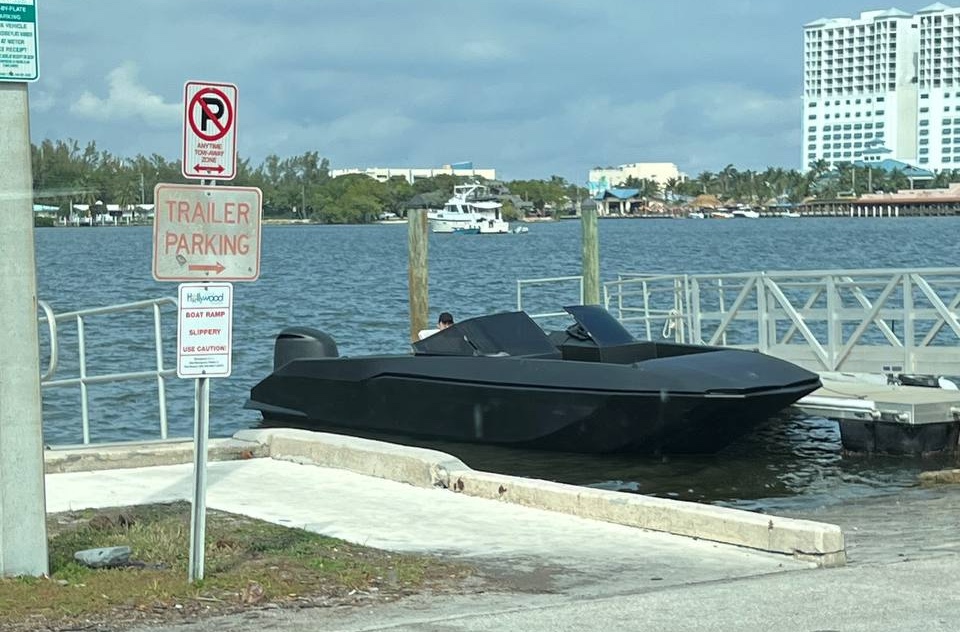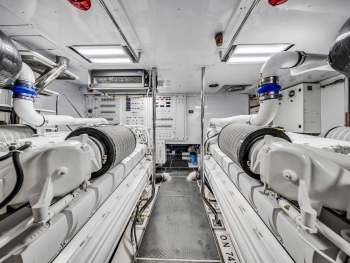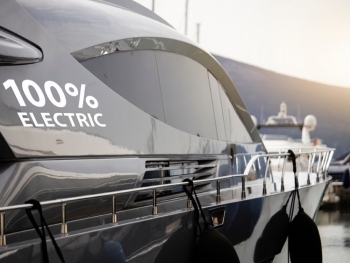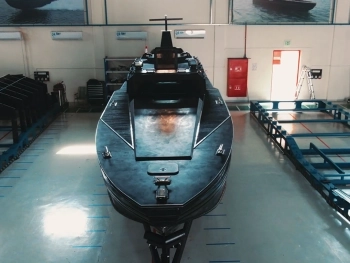The global yacht industry continues to evolve rapidly. As economic pressures, shifting buyer preferences, and technological innovations converge, 2025 is shaping up to be a transformative year. For buyers, investors, and boutique builders like Perulla, understanding where capital is flowing-and why-is critical to staying ahead.
In this article, we’ll explore:
- The overall market trajectory
- Key drivers shaping demand
- Regional “hotspots” for investment
- Vessel types and segments gaining momentum
- Ownership models and buyer behavior
- Risks, challenges, and how to position smartly
1. Market Overview & Growth Projections
- The global yacht market is projected to expand steadily. According to some industry forecasts, the market may grow from $9.06 billion in 2024 to $9.48 billion in 2025, reflecting a CAGR of ~4.7 %
- More optimistic projections exist. For example, a report estimates a longer-term CAGR of ~6.6 % from 2025 to 2032, projecting the market to reach over $21 billion by 2032.
- In the superyacht brokerage sector (boats 78 ft / ~24 m+), Q1 2025 saw 125 yachts sold globally, up from 87 in Q1 2024, with total sales reaching nearly US $1 billion.
- That said, the average sale price dipped somewhat-from ~$11.7 million in Q1 2024 to ~$10.7 million in Q1 2025-indicating buyers may be shifting toward “sweet-spot” mid-size vessels or negotiating harder on price.
- Market behavior is also showing signs of slower turnover: average days on market increased (e.g. in Q1 2025, 573 days vs 470 days in 2024).
These data suggest a market that’s still growing overall, but with caution, increasing maturity, and significant shifts in buyer strategy.
2. Key Drivers & Trends Steering 2025
2.1 Rise of New Buyer Profiles & Global Wealth Diversification
- The pool of ultra-high-net-worth individuals (UHNWIs) is broadening globally-especially in Asia, the Middle East, Latin America, and Africa. These new entrants bring fresh demand and novel priorities.
- Younger, tech-savvy buyers are more prevalent. They often value experiential luxury, connectivity, and sustainability rather than purely status symbols.
- Many of these newer buyers view yachts as flexible lifestyle assets-mobile offices, family sanctuaries, or promotion tools-not just prestige purchases.
2.2 Sustainability & Eco-Innovation as Table Stakes
- Sustainability is no longer optional-it’s a differentiator. Buyers increasingly expect hybrid propulsion, solar systems, carbon-offsetting, recyclable materials, and energy-efficient designs.
- Builders are responding: eco-yacht segments and green retrofits are gaining traction.
- In Europe and North America especially, environmental regulation pressures (emission rules, noise control, harbor restrictions) are pushing innovation.
2.3 Digital Transformation & Buyer Journey Evolution
- The yacht search and purchase process is becoming more digitalized. Platforms now offer 3D virtual tours, AI-based matching, digital contract flow, and integrated multimedia listing experiences.
- Buyers expect transparency: verified specs, maintenance history, performance data, and full documentation are increasingly core to trust.
- Yacht marketplaces and MLS platforms are evolving into robust ecosystems where buyers can filter precisely by features, cost, build date, etc.
2.4 Shift Toward Semi-Custom & Modular Builds
- Fully custom yachts remain desirable at the highest tier, but many buyers are now opting for semi-custom platforms-a balance of personalization and reduced lead time.
- Another trend: explorer yachts and robust long-range models are increasing in production. For instance, explorer yacht count nearly doubled between 2020 and 2025.
- Catamarans and multihulls are also growing in appeal-especially for owners wanting stability, space, and efficient cruising.
2.5 Charter-to-Ownership & Mixed Use Models
- Many buyers now use charter-to-ownership as a pathway. They charter a similar vessel first to test fit, then decide whether to build or purchase a similar spec.
- Yachts built with dual-purpose use (private + charter) are in higher demand-buyers seek designs that can recoup costs when not in personal use.
- The pre-owned market has remained resilient; well-priced, well-maintained second-hand yachts are attractive to buyers seeking speed and value.
3. Regional Investment Hotspots in 2025
While traditional markets (Mediterranean, U.S., Caribbean) remain strong, new regions are gaining prominence.
3.1 The Mediterranean & Europe
- Europe continues to dominate yacht build infrastructure and luxury demand. In 2024, Europe was the largest regional market.
- Mediterranean cruising remains a major draw for buyers, and European buyers are pushing for greener port infrastructure and higher standards.
- Some southern European nations are also offering favorable VAT or tax incentives to attract yacht owners and refit business.
3.2 North America & U.S.
- The U.S. is seeing growing domestic demand for luxury yachts, especially in Florida, the Gulf Coast, and the Pacific coastlines.
- However, the U.S. pre-owned market has shown softening in early 2025: some months saw 20-35 % lower sales compared to prior year levels in the U.S. pre-owned segment.
- Trade tariffs and import duties are being considered more heavily as buyers evaluate cross-border purchases.
3.3 Asia-Pacific & Southeast Asia
- Significant growth potential. Countries like China, Singapore, and others are developing yacht infrastructure, marinas, and regulations to support yacht ownership.
- Wealth growth in Asia is fueling demand for luxury assets, including yachts, especially for regional cruising.
3.4 Middle East & Gulf Region
- The Middle East is investing aggressively in luxury tourism and marinas. Yachting is becoming part of national tourism strategies (e.g. Red Sea initiatives in Saudi Arabia).
- Buyers in the Gulf are increasingly purchasing expedition and hybrid yachts optimized for long-range cruising in remote seas.
3.5 Latin America & South America
- While still a niche segment, yacht ownership and charter infrastructure are gradually improving in places such as Brazil, Panama, and the Caribbean coasts - creating emerging demand.
- Some buyers see South America and Central America as attractive destinations for exploration and cruising that diverge from traditional routes.
4. Vessel Types & Segments to Watch
4.1 Mid-Size “Sweet Spot” Yachts (~20–50 m)
- Buyers are gravitating toward mid-size yachts that balance performance, comfort, and manageability. In many markets, the average sale price dip reflects this shift.
- These vessels often offer customizable layouts, efficient propulsion, and better value per foot.
4.2 Explorer / Expedition Yachts
- The explorer yacht category has seen rapid growth. These designs, optimized for long-range, robust construction, and versatility, cater to adventurous buyers seeking off-grid cruising.
4.3 Catamarans & Multihulls
- As mentioned earlier, catamarans are gaining ground in the luxury segment-especially among buyers prioritizing stability, space, and fuel efficiency.
4.4 Eco / Hybrid & Electric Yachts
- Hybrids and electric propulsion solutions are no longer niche-many new-builds now incorporate solar, battery systems, regenerative tech, and hybrid diesel-electric drivetrains.
- As regulatory pressures strengthen, demand for greener systems will only intensify.
5. Ownership Behavior & Buyer Tactics
5.1 Slower, More Deliberate Buying Cycles
- Buyers are taking more time to research, compare, and negotiate. User activity (site visits, saved listings) is rising even if transactions are slower.
- Yachts are spending more days on market; sellers may need to price more carefully and provide deeper transparency.
5.2 Emphasis on Transparency & Documentation
- Buyers now expect full maintenance logs, third-party surveys, proven performance data, and verifiable histories.
- Builders and sellers who deliver data-rich and transparent offerings gain trust.
5.3 Hybrid Usage Models & Charter Income
- Many owners offset costs by chartering. Yachts designed with dual functionalities are more attractive.
- Some buyers begin by chartering before committing to ownership (the “try-before-you-own” model).
5.4 Discounting & Negotiation Pressure
- Sellers are offering more price reductions; Q1 2025 stats show average price reductions per yacht of ~8.97 %.
- In some regions, brokerage asking prices have declined ~9 % year-on-year.
6. Strategic Implications for Builders & Buyers
For Boutique Builders (like Perulla)
- Innovate in material & sustainability - those who lead in green engineering will command premium appeal.
- Offer semi-customizable platforms to reduce lead times while maintaining buyer involvement.
- Leverage digital tools and transparency to build credibility and shorten sales cycles.
- Design dual-purpose yachts (personal + charter) to broaden buyer appeal.
- Target emerging markets where yacht infrastructure is improving and competition is still lower.
For Buyers & Investors
- Look beyond headline models-mid-size yachts with smart design may offer better value now.
- Evaluate the total cost of ownership: fuel, maintenance, refits, mooring, etc., and favor designs that reduce those burdens.
- Expect and require transparency: certified surveys, performance tests, maintenance histories.
- Use charter pathways or fractional models as stepping stones if uncertain.
- Be regionally agile: choose locations with favorable tax, registration, and harbor infrastructure.
The yacht market of 2025 is not defined solely by bigger or flashier vessels, but by smarter, leaner, and more responsible luxury. Demand is shifting to mid-size, adventure-capable, and eco-aware designs. Regions beyond the traditional strongholds are coming into play. And buyer behavior is evolving: more cautious, data-driven, and value-sensitive.
For boutique builders like Perulla, this environment is fertile. A focus on innovation, transparency, sustainability, and smart design can help you capture discerning buyers across the globe. For purchasers, this is a moment to bet thoughtfully-not wildly-on the right vessels at the right time.












